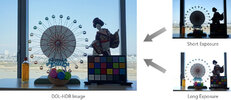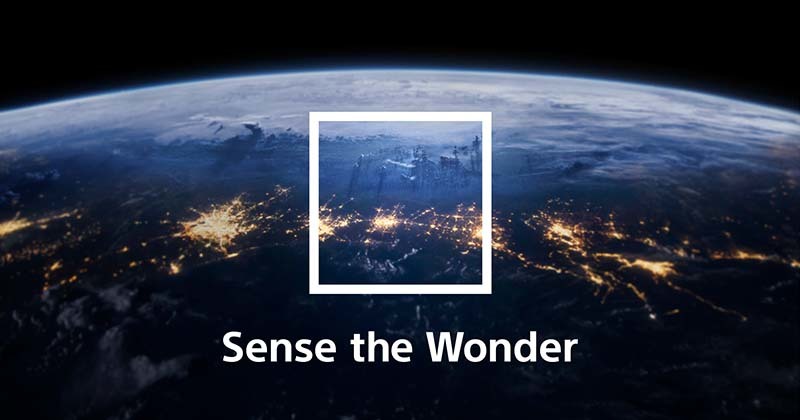Dashmellow
Well-Known Member
- Joined
- Sep 22, 2013
- Messages
- 18,576
- Reaction score
- 19,186
- Location
- Uncanny Valley (●_●)
- Country
- United States
- Dash Cam
- Umpteen
I'm confused as anything. Have the Vantrue N4 Pro and the reflections on licence plates at night are not there like they used to be on older cameras. Is that because of some new technology on the Starvis 2? (That isn't clear HDR)It seems to be only for NT98529.
I believe they are using the DOL-HDR, which was available on previous sensors, but nobody got around to supporting it on dashcams.I'm confused as anything. Have the Vantrue N4 Pro and the reflections on licence plates at night are not there like they used to be on older cameras. Is that because of some new technology on the Starvis 2? (That isn't clear HDR)
An enigma nonetheless, maybe these things take time, or it's just radio silence..For all the issues that have been mentioned by various users - there is still no Firmware updates to fix anything - and the lack of support is surprising.
My experience of Vantrue firmware updates in the past has been that they are infrequent and tend to break things! So this isn't too unexpected.An enigma nonetheless, maybe these things take time, or it's just radio silence..
HDR that had a time gap between the two exposures which resulted in ghost images, the DOL-HDR doesn't, so there are no ghost images, and that is what makes the difference.
So, no Nigel, as @LateralNW says, DOL- HDR is the opposite of that.Nigel: HDR that had a time gap between the two exposures which resulted in ghost images, the DOL-HDR doesn't, so there are no ghost images, and that is what makes the difference.

Because we really did the testing and comparison, so we can make this conclusion.I'm not sure what's going on with the explanation with HDR and Sony sensor but what you wrote seems opposite to what Sony's blurb says.
From Sony's web site.
DOL HDR
When the digital-overlap (DOL) HDR feature is on, the image sensor captures two images in successionne with a short exposure according to the bright region and the other with a long exposure adjusted to the dark region. HDR is realized by synthesizing these two images to complement one another.
However, this method involves a slight time lapse between the two shots and this can cause some artifacts, such as a blurred outline and chromatic aberration, if the target is in fast motion.
Perhaps your information has come from Viofo who also states that Clear HDR is not ideal for night.
In theory Clear HDR should be the perfect solution. I say in theory as I don't have them to test and am relying on companies telling the truth. (That could explain part of the problem on all sides. )
DOL-HDR does not involve a time lapse between the exposures, the 'O' is for Overlapped, which means the exposures are simultaneous, at least during part of the exposure. One exposure is fast with no motion blur but only able to see the bright areas, the other is slow with motion blur but able to see the dark areas.I'm not sure what's going on with the explanation with HDR and Sony sensor but what you wrote seems opposite to what Sony's blurb says.
From Sony's web site.
DOL HDR
When the digital-overlap (DOL) HDR feature is on, the image sensor captures two images in successionne with a short exposure according to the bright region and the other with a long exposure adjusted to the dark region. HDR is realized by synthesizing these two images to complement one another.
However, this method involves a slight time lapse between the two shots and this can cause some artifacts, such as a blurred outline and chromatic aberration, if the target is in fast motion.
Perhaps your information has come from Viofo who also states that Clear HDR is not ideal for night.
In theory Clear HDR should be the perfect solution. I say in theory as I don't have them to test and am relying on companies telling the truth. (That could explain part of the problem on all sides. )
Thank you for entering into this discussion.Because we really did the testing and comparison, so we can make this conclusion.
You can ask Vantrue if they have done any testing with CLEAR HDR.
If exposure and shutter speed is poor I'd expect blurring with any camera.Clear HDR has motion blur on both exposures, it can see both bright and dark, but both have full motion blur and thus are no good for reading license plates.
Clear HDR does avoid all the artefacts, except for motion blur.
It does work, it is great for movies, but it doesn't do what we want for dashcams.If you're correct then it is disappointing that Sony's clear hdr doesn't work.
I find it interesting Sony says it's suitable for Dashcams.
Sony said:"In general, HDR is realized by capturing a bright and dark image in succession and superimposing one over the other (known as DOL HDR). This method involves a slight time lapse between the two shots, and this can cause some artifacts, such as contour blur and chromatic aberration, if the target is in fast motion (See the image ‘DOL HDR’ below)
This problem is solved by Clear HDR. It can produce both bright and dark images in one shot, and this eliminates artifacts from targets in motion, resulting in a clear HDR image. This is an ideal feature for capturing images of vehicles in motion."

 www.framos.com
www.framos.com
It does work, it is great for movies, but it doesn't do what we want for dashcams.

Dashcam | Application | Sony Semiconductor Solutions Group
Sony Semiconductor Solutions Group develops device business which includes Micro display, LSIs, and Semiconductor Laser, in focusing on Image Sensor.www.sony-semicon.com
They say that this is the result of DOL-HDR, which is what the A229 Pro and A139 Pro are using, but I have never seen these purple/magenta motion artefacts on any Viofo dashcam:

and they say this is the result of Clear HDR, which does look possible, but The A139/A229 Pro give far sharper plate reading using DOL-HDR:

For some reason, they didn't take this image from a dashcam in another car, it is taken from the footpath!
Of course in reality those two images are the same photograph, probably from a tripod mounted DSLR, that has been manipulated into fake images, so you can't trust what they show!
The claim of chromatic aberration on DOL-HDR makes no sense to me, for a colour image sensor, chromatic aberration is purely a lens issue, it has nothing to do with the sensor. The description of DOL-HDR is actually a description of old, pre DOL HDR. The description of Clear HDR is OK, unless you want to read the plates at higher speeds.
If you click on Clear HDR in the quote then the explanation there is OK for Clear HDR, but the explanation of DOL-HDR is still incorrect.
This is a reasonable explanation of DOL-HDR, I think written by Sony when DOL-HDR was new:

Rolling Shutter Image Sensors | FRAMOS
Find an overview of our Rolling Shutter Image Sensors for your vision applications ►FSI CMOS sensors ✓ BSI sensors ✓ STARVIS Technology ✓ Learn more!www.framos.com
He is pretty much reading the Sony explanation, complete with inaccuracies. Doing a really nice job of "reading" it, not his fault it is wrong!I stumbled across this video from Joseph from Blackboxmycar who explains the differences the same way I understand how Clear HDR should work.
Here is the review about Sony Starvis 2 starting where he mentions the HDR abilities.
I understood that it was not an attack. Maybe I need to explain more in detail.Thank you for entering into this discussion.
It was not my intention to attack Viofo but rather suggest another forum user may have misunderstood what Viofo wrote.
I had high expectations of clear hdr thinking it was the solution for Dashcams.
The way i wrote the above was not meant to attack Viofo.
The explanation Sony writes on their web site seems to contradict what another forum user suggests.
So
I contacted Sony recently and am hoping they will reply as I suggested they might be exaggerating what clear hdr does.
I'm happy to ask @Jeff_Vantrue whether Vantrue has done extensive testing on clear hdr.
Just to be perfectly clear I have no gripe with Viofo.
Please pm me if I haven't made it clear.
Cheers
The DOL-HDR does what we need, it will be very hard to improve.There are other solutions for supporting good HDR, maybe in the near future, we can see better HDR performance compared to the STARVIS 2 sensor.
I think if it is bright enough for Clear HDR to provide no motion blur then it is also bright enough for DOL HDR to provide no motion blur and no ghosts. The clear HDR probably combines the two exposures a little better, but I am not seeing problems with DOL HDR during daylight. I am not convinced that DOL-HDR needs to be turned off during daylight, I have been leaving it on. There may be some differences if you run two cameras side by side with one HDR On and the other HDR Off, but I think those are just exposure differences due to different firmware choices and could probably be fixed.Thanks for explanation. But may be we may use CLEAR HDR for daytime and DOL HDR for nighttime according to HDR timer settings? Because HDR in daytime also useful when moving from dark to bright zones and vice versa but DOL HDR makes ghosts artefacts like in sshot
